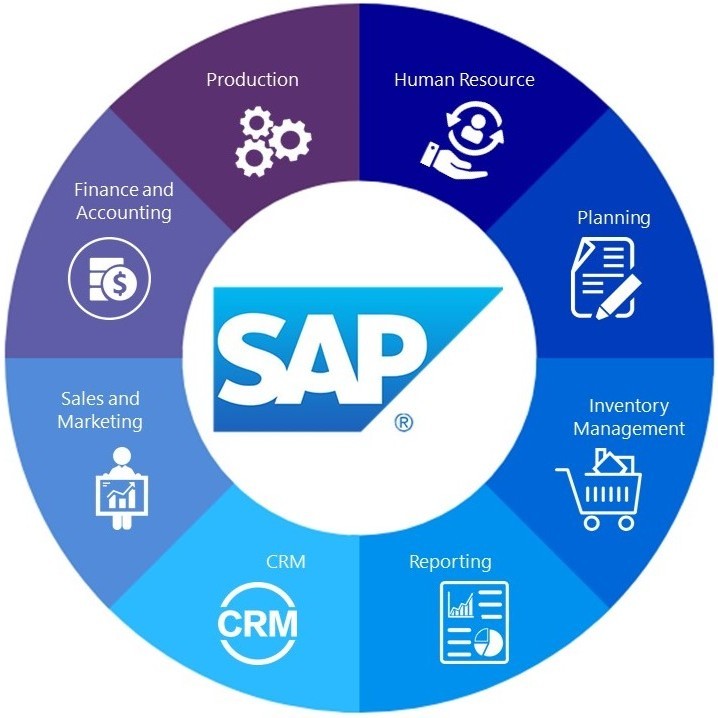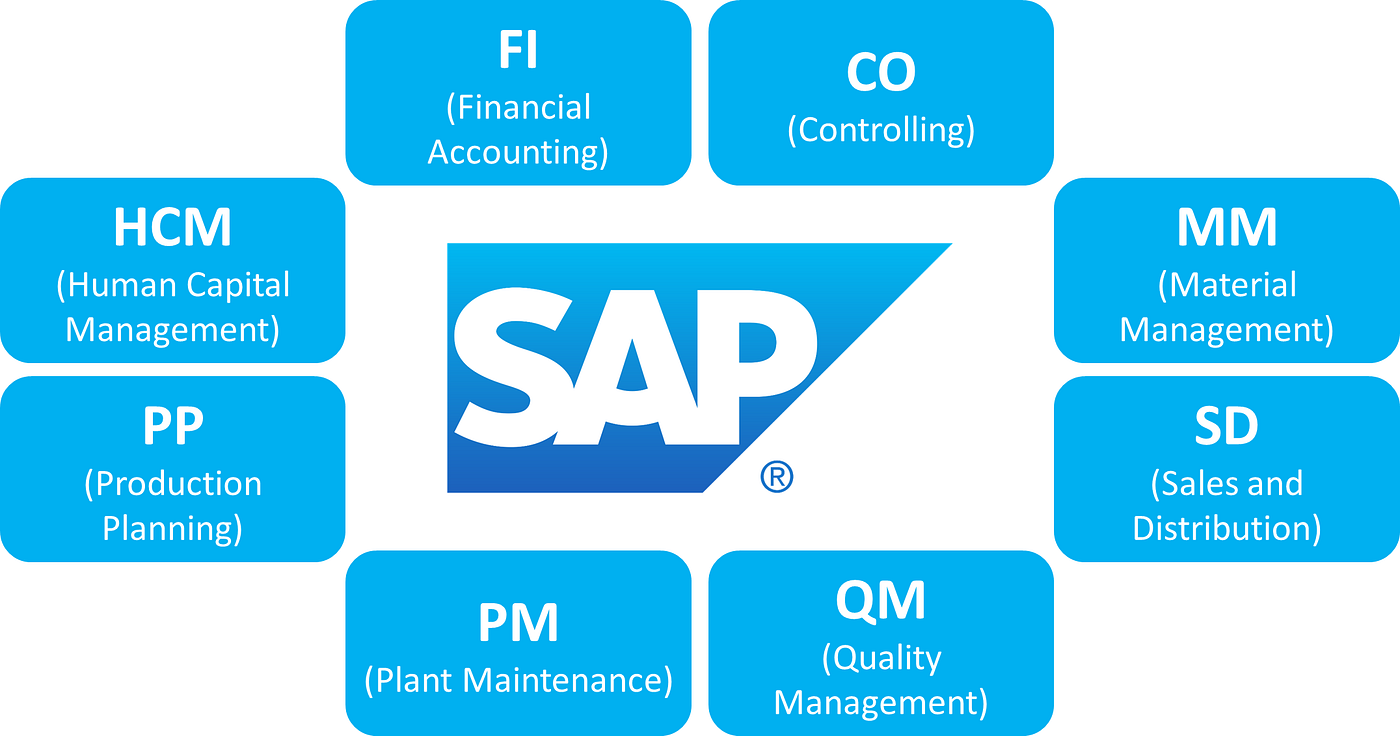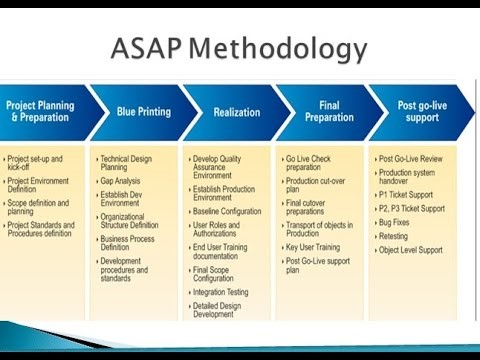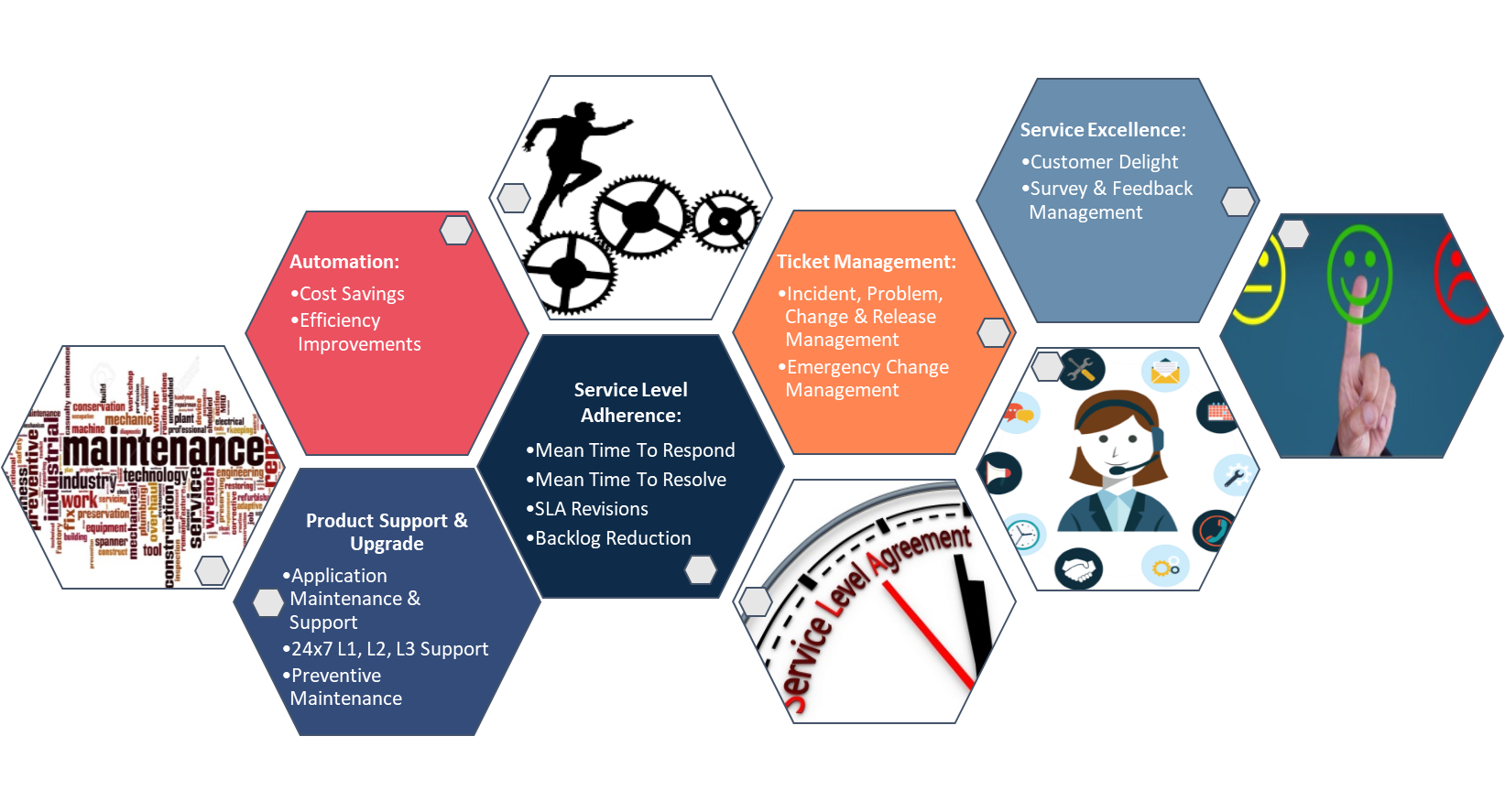SAP


SAP is a global leader in enterprise software, offering a diverse range of solutions designed to streamline business operations and drive digital transformation. SAP's flagship product, S/4HANA, revolutionizes ERP by integrating core business functions in real-time, providing businesses with actionable insights and agility. SuccessFactors, SAP's cloud-based HCM software, enables organizations to manage HR processes efficiently, enhance workforce engagement, and foster talent development. SAP Ariba simplifies procurement with a cloud-based platform that improves sourcing, procurement, and supplier management processes. Additionally, SAP Customer Experience (CX) solutions empower businesses to deliver personalized customer experiences across sales, marketing, and service interactions. With a commitment to innovation and industry-specific solutions, SAP helps businesses across various sectors optimize processes, enhance productivity, and achieve strategic goals. SAP's Business Technology Platform supports data management, analytics, application development, and integration across SAP and non-SAP systems, facilitating digital transformation and driving business growth. Trusted by organizations worldwide, SAP continues to lead in enterprise software by delivering scalable, reliable, and secure solutions that meet the evolving needs of modern businesses.
- Overview
- Consulting
- Implementation
- Maintenance
- Downloads
Aiprus Software specializes in custom SAP solutions, empowering businesses with enterprise capabilities. As a trusted implementation partner, we leverage SAP's suite, including S/4HANA for ERP integration, SuccessFactors for cloud-based HCM, Ariba for procurement, and Customer Experience for CRM. From consultation to ongoing support, we tailor SAP deployments to meet specific business needs, ensuring scalability, reliability, and innovation. With deep industry expertise and a commitment to excellence, Aiprus Software helps clients achieve strategic goals and stay competitive in the digital economy.

Aiprus Software specializes in SAP consulting services, empowering businesses to maximize the benefits of SAP's enterprise solutions. We offer expertise in SAP S/4HANA for real-time ERP integration, SuccessFactors for cloud-based HR management, Ariba for streamlined procurement, and Customer Experience (CX) for personalized CRM strategies. Our approach begins with strategic planning and includes system design, configuration, seamless integration, and user training to optimize workflows and enhance productivity. With a focus on client success and scalable solutions, Aiprus Software ensures businesses achieve operational excellence and sustainable growth through tailored SAP consulting services.
Process
Consulting
Program/Project Management
Solutioning
& Strategy
Oracle
Architecture
Systems Integration with Oracle
Aiprus Software excels in SAP implementation services, ensuring businesses effectively deploy and optimize SAP's powerful enterprise solutions. Specializing in SAP S/4HANA for real-time ERP integration, SuccessFactors for cloud-based HR management, Ariba for procurement efficiency, and Customer Experience (CX) for personalized CRM strategies, we tailor our implementation approach to meet specific business needs
Our implementation process begins with comprehensive planning and assessment to align SAP solutions with your organizational goals. We handle system design, configuration, seamless integration with existing IT infrastructure, and thorough user training to ensure smooth adoption. Aiprus Software emphasizes scalability and operational efficiency, providing ongoing support and proactive maintenance to optimize system performance.
Choose Aiprus Software for SAP implementation services that drive efficiency, enhance decision-making, and support long-term business growth. Partner with us to unlock the full potential of SAP solutions and transform your business operations effectively.

Phase 1: Project Planning & Preparation
This phase focuses on the initial planning and preparation to set ASAP goals. The phase typically follows these three steps:
- Clarify scope of implementation
- Establish the team — committees, teams (core, project and consulting)
- Define the sequence of project implementation.
Phase 2: Business Blueprint
The aim of this phase is to arrive at a common understanding concerned with the procedures intended to support the project. The Business Blueprint is a detailed document containing all requirements derived during initial brainstorming and initiation meetings. This is also where the project team revises its objectives and goals while setting a schedule for each.
Phase 3: Realization
This phase builds on Phase 2; it’s focused on implementing all business process requirements. In this phase, project managers should attain signoff from stakeholders. Two work packages define the system configuration methodology:
- Baseline, concerned with the major scope.
- Final Configuration, concerned with the remaining scope.
Phase 4: Final Preparation
The final preparation involves testing, system management, cut over activities, end-user training, and all other tasks that are required to go live. Successful completion of Final Preparation ensures that the organization is ready to begin using the new system.
Phase 5: Go Live and Support
This phase is the journey from a pre-production environment to a live project operation. The most critical elements in this phase are related to production support setup, monitoring system transactions, and optimizing system performance.
Advantages of ASAP Methodology
The ASAP Methodology covers the entire project lifecycle from the initial evaluation through post-project management. The ASAP roadmap also ensures a transparent value delivery system that consistently reflects upon business care while acting as a guide for SOA (Service Oriented Architecture) and BPM (Business Process Management).
- Proven, transparent approach that facilitates the project team to collaborate efficiently—reducing implementation costs, time, and risks
- Sensible risk management
- Better knowledge management: ASAP helps project management organize, implement, and meet business objectives
- Steering committee tools
- Better results because ASAP methodology is based on the experience of others—the roadmap requires both soft skills and hard facts
- Project times may be reduced
- Better communications planning
- Combination of best practice tools including ITIL, PMI, Internal SAP, and others
Aiprus Software offers comprehensive SAP maintenance services designed to ensure the ongoing reliability, performance, and security of your SAP environment. As businesses rely increasingly on SAP solutions like S/4HANA for ERP integration, SuccessFactors for HR management, Ariba for procurement, and Customer Experience (CX) for CRM, maintaining these systems becomes critical to sustaining operational excellence.
b. Partner with Aiprus Software for SAP maintenance services that prioritize reliability, security, and continuous improvement. Our proactive approach ensures your SAP environment remains stable and optimized, empowering your business to focus on strategic initiatives and achieve long-term success in the digital landscape.

